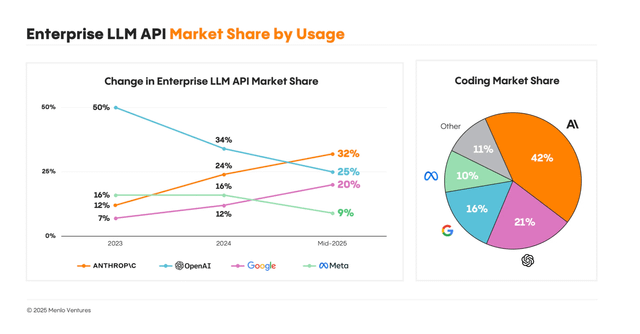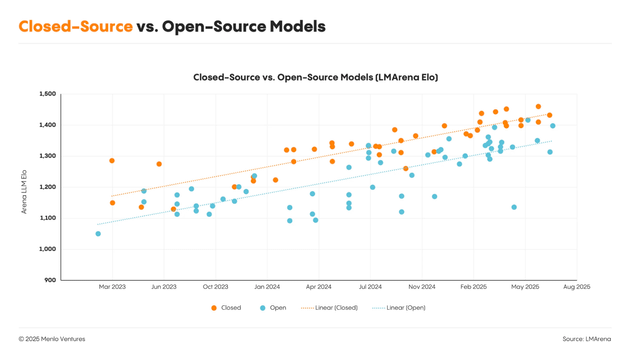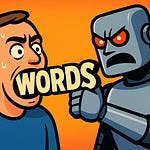The Mandate of Heaven: Why OpenAI’s Unquestioned Reign is Over
I’m just going to say it: OpenAI has lost the mandate.
For those unfamiliar with the term, the “Mandate of Heaven” is a concept from ancient Chinese history. It was the idea that a ruling dynasty had a divine, cosmological right to rule, bestowed upon them by the heavens. This blessing wasn’t permanent; if a dynasty became corrupt, incompetent, or unlucky, it could lose the mandate. This loss would be signaled by disasters and unrest, culminating in a civil war from which a new dynasty would emerge, claiming the mandate for itself.
For the last few years, the tech world has applied this meme to OpenAI. They had the mandate. It seemed like no one could knock them off their perch. Every time a competitor released a new model, OpenAI would drop something demonstrably better. Sam Altman seemed infallible, made of Teflon. They had captured the empire, and it was their right to rule.
Today, I believe that era is over.
This isn’t a consensus opinion, and I’m not predicting OpenAI’s imminent collapse. They are here to stay and will remain a monumental force in the industry. But the ground has shifted. The market is maturing, competitors are landing decisive blows, and the technological moats we all assumed existed have proven to be illusions. OpenAI is no longer the sole, divinely appointed ruler; they are now merely one powerful contender in a multipolar world.
Here’s the evidence that has led me to this conclusion.
1. The Numbers Don’t Lie: Anthropic is Eating Their Lunch
The most concrete evidence of a changing tide comes from the battleground of enterprise adoption. A few years ago, OpenAI dominated both enterprise and consumer markets. Today, the story is radically different.
According to recent market analysis, Anthropic now commands 40% of the enterprise AI market share, while OpenAI has fallen to just 20%.

Let that sink in. A competitor, once seen as a distant second, now has double OpenAI’s footprint in the most lucrative sector. Simultaneously, OpenAI’s consumer market share has dwindled from a near-monopolistic 80% to a far more vulnerable 40%. They are still the single largest player, but the trend is undeniable. The narrative of inevitable, compounding dominance has been shattered by the simple reality of market dynamics. Sam Altman’s vision of capturing the lion’s share of a hypothetical hundred-trillion-dollar AI economy now seems like a relic from a more hyperbolic time.
2. The Great Illusion: There is No Moat
We often associate high-tech with deep, defensible moats. Take semiconductor manufacturing. As Anastasi in Tech has brilliantly detailed, building a chip fab is a monumental undertaking. The process is so sensitive that facilities must be finely calibrated to purify the local water supply—a process that has to be reinvented when TSMC builds a new fab in Arizona. That combination of tribal knowledge, immense capital, and physical infrastructure creates an almost unbreachable moat.
Artificial intelligence has no such thing.
The Algorithms are Public: Frontier labs, universities, and nations all publish their research. The foundational principles of transformers are common knowledge.
The Data is Ubiquitous: While proprietary datasets offer a temporary edge, the rise of high-quality synthetic data generation is rapidly democratizing access to training material.
The Talent is Fluid: In Silicon Valley, non-compete agreements are largely unenforceable. This creates a hyper-competitive market for talent, where expertise is routinely poached for nine- or ten-figure deals.
Without a durable moat around technology, data, or talent, the only differentiating factors left are execution, product quality, and market strategy. And on that front, OpenAI is beginning to falter.
Here’s Anastasi’s video if you want to check it out. Seriously, after watching this I realized that chip fabs are practically black magic:
Chip fabrication has deep, deep moats. But actual AI? Not so much. Everyone and their brother seems to be duplicating frontier lab success. Heck, even Open Source is only a few months behind, and that has not changed.
3. The Enterprise Paradox: How Safety Became a Killer Feature
One of the deepest ironies in this story is why Anthropic is winning. Their “safety-pilled” approach, often criticized by some as being overly cautious and colored by the effective altruism movement, has turned out to be their single greatest commercial advantage.
For years, I’ve argued that the primary selective pressure on AI evolution would come from enterprise, government, and military clients. What do these customers demand above all else? Reliability. They need to know exactly what an AI can and cannot do. They require precise control over its behavior. They need it to be, for lack of a better word, safe.

Anthropic’s intense focus on interpretability, controllability, and mechanistic understanding of their models—research born from a concern for x-risk—is precisely what delivers that enterprise-grade reliability. When a company is integrating an LLM into its core business processes, it values predictability far more than a slight edge on a coding benchmark. The numbers prove it: customers are willing to pay more for Anthropic’s models because they trust them more.
4. A Distracted Titan? Chasing Shiny Objects
While competitors focus on fundamentals, OpenAI seems increasingly distracted. Their recent Dev Day streams feel sanitized and less ambitious, heavy on business adoption stats and light on the revolutionary fervor of years past. Their product releases tell a similar story.
Sora: An impressive tech demo that, in practice, often feels like a “slop generator.” The quality is inconsistent, the audio is grainy, and it frequently ignores specific instructions in favor of its own creative whims.
Pulse: A new feature that provides a three-paragraph summary of your recent conversations. It’s a minor convenience, not a leap forward in capability or a solution to any pressing user problem.
GPT-5: While incredibly powerful, my biggest complaint is its tendency to “choose its own adventure.” I give it a specific, constrained problem, and it returns something else entirely—a solution to a problem I didn’t ask it to solve.
This reminds me of an old architect I once knew whose father insisted every piece of technology should be like a toaster: simple, reliable, and does exactly what it’s supposed to do. OpenAI seems to be losing that toaster-like simplicity, getting bogged down in features while the core user experience and reliability degrade. In my own daily workflow, I’ve switched to Gemini Pro, even while paying for an OpenAI subscription. It doesn’t lose track of conversations, it isn’t needlessly pedantic, and it reliably stays on task. It just works better.
Sora was cool for a couple days. I used it to generate a depiction of a dream I had, which is neat. But it’s kinda just slop.
5. The Empire Strikes Back: Incumbents Have Woken Up
Perhaps the most significant headwind for OpenAI is the one they can’t do anything about: the sheer scale of their incumbent competitors. While Sam Altman flies to the Middle East seeking funding for ambitious data center projects like Stargate, his rivals are leveraging decades of established infrastructure.
Google: Has been building its own custom AI accelerators (TPUs) for over a decade, giving them a massive advantage in compute cost and availability. They have the data centers, the global infrastructure, and with DeepMind, the research talent to match anyone. Just yesterday, Microsoft announced that a 27-billion-parameter model they developed had proposed a novel understanding of cancer pathways that was later validated by researchers. This is the kind of world-changing breakthrough we once expected to come exclusively from OpenAI.
Microsoft: Deeply integrated with OpenAI but also pursuing its own foundational model research, as the cancer discovery proves.
Meta & xAI: While I remain skeptical of their current strategies—Zuckerberg’s vision of AGI can seem like a better Reels algorithm, and Elon’s approach with Grok is chaotic—they possess effectively unlimited capital and compute. Through sheer brute force and iteration, they cannot be counted out.
These companies don’t face the same financial or infrastructural headwinds as OpenAI. They are catching up, and in some areas, have already surpassed them. When Sam Altman himself admitted that Google “should have been the winner by default,” he was acknowledging a fundamental truth. It turns out, that default advantage is beginning to assert itself.
The game is far from over, but the rules have changed. OpenAI’s solitary reign has ended. The mandate is now fractured, and the future of AI will not be decided by a single king, but by a contentious and thrilling struggle between empires.











